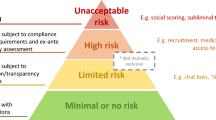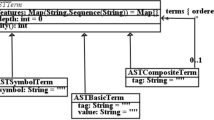Abstract
UML-based methodologies take more and more space in the software development domain. In addition, the need to validate applications as early as possible in the development cycle is now mandatory to satisfy cost and time-to-market constraints. In this context, this paper describes, first, how to bridge the gap between semiformal UML models and a formal technology ensuring test case generation. Second, the formal tool used to automatically generate test sequences, named AGATHA, is described in minute detail. Finally, this approach is illustrated throughout by a toy example of an elevator system.
Similar content being viewed by others
References
Buy U, Orso A, Pezzé M (2000) Automated testing of classes. In: Proceedings of ISSTA’00, Portland, OR, 21–24 August 2000, pp 39–48
Clarke EM, Grumberg O, Peled DA (1999) Model checking. MIT Press, Cambridge, MA
Clarke LA (1976) A system to generate test data and symbolically execute programs. IEEE Trans Softw Eng SE-2(3):215–222
Dershowitz N, Jouannaud J-P (1990) Rewrite systems. In: van Leeuwen J (ed) Handbook of theoretical computer science, vol B. Elsevier, North-Holland, pp 243–320
Fernandez J-C, Jard C, Jeron T, Viho C (1996) Using on the fly verification techniques for the generation of test suites. In: Proceedings of CAV’96, New Brunswick, NJ, 31 July–3 August 1996. Lecture notes in computer science, vol 1102. Springer, Berlin Heidelberg New York
Gallois J-P, Lanusse A (1997) Le tests structurel pour la vérification de spécifications de systèmes industriels. Génie logiciel 46:145–150
Gallois J-P, Lapitre A, Lé P (1999) Analyse de spécifications industrielles et génération automatique de tests. In: Proceedings of ICSSEA’99, CNAM-Paris, France, 8–10 December 1999, vol 3
Gérard S (2000) The ACCORD/UML profile. CEA-LIST, Internal report, Gif sur Yvette, France
Gérard S, Voros NS, Koulamas C (2000) Efficient system modeling of complex real-time industry; networks using the ACCORD/UML methodology. In: Proceedings of DIPES’00, Schloss Eringerfeld, Germany, 18–19 October 2000, pp 11–22
Harel D (1987) Statecharts: a visual formalism for complex systems. Sci Comput Programm 8:231–274
Hartmann J, Imoberdorf C, Meisinger M (2000) UML-based integration testing. In: Proceedings of ISSTA’00, Portland, OR, 21–24 August 2000, pp 60–70
Hennessy M, Lin H (1995) Symbolic bisimulations. Theor Comput Sci 138:353–389
Henzinger TA, Nicollin X, Sifakis J, Yovine S (1992) Symbolic model checking for real-time systems. In: Proceedings of the 7th IEEE conference on logics in computer science (LICS), Santa Cruz, CA, pp 394–406
Huang J-C (1975) An approach to program testing. ACM Comput Surv 7(3):113–128
Ishisone M, Sawada T (2001) Brute: brute force rewriting engine. JAIST – Japan Advanced Institute of Science and Technology, January. http://www.theta.theta.ro/cafeobj
ISO (1997) Estelle – a formal description technique based on an extended state transition model. ISO/TC97/SC21, IS 9074
Kamp G, Wache H (1996) CTL: a description logic with expressive concrete domains. In: Holldobler St (ed) Proceedings of KI-96, 20. Deutsche Jahrestagung für Künstliche Intelligenz, Springer, Berlin Heidelberg New York
King J-C (1976) Symbolic execution and program testing. Commun ACM 19(7):385–394
Klop JW (1991) Term of rewriting systems. In: Gabbay D, Abramski S, Maibaum T (eds) Handbook of logic in computer science, vol 1. Oxford University Press, Oxford, UK
Lapitre A (2002) Procédure de réduction pour les systèmes à base d’automates comunnicants: formalisation et mise en oeuvre. PhD thesis, University of Paris XI, France, in collaboration with the CEA, December
Lugato D, Rapin N, Gallois J-P (2001) Verification and tests generation for SDL industrial specifications with the AGATHA toolset. In: Proceedings of the workshop on real-time tools (CONCUR’01), Aalborg, Denmark, 21–24 August 2001
Milner R (1989) Communication and concurrency. Prentice-Hall, Upper Saddle River, NJ
OMG (2003) Unified Modelling Language 1.4. OMG, Report formal/2000-03-01, March 2003. http://www.omg.org
Pierron J-Y (2003) Définition de critères de sélection de tests fonctionnels pour la validation des systèmes électroniques embarqués. PhD thesis, University of Evry, France, in collaboration with the CEA and PSA, April
Pierron J-Y, Gallois J-P, Fievet E, Lapitre A, Lugato D (2000) Validation de systèmes industriels par le test symbolique sur spécification STATEMATE. In: Proceedings of ICSSEA’00, CNAM-Paris, France, 5–8 December, vol 2
Presburger M (1929) Über die Vollständigkeit eines gewissen Systems der Arithmetic. Comptes rendus du premier Congrès de Mathématiques des Pays Slaves 395:92–101
Rumbaugh J, Jacobson I, Booch G (1998) The unified modelling language reference manual. Addison-Wesley, Reading, MA
Tessier P, Gérard S, Mraidha C, Terrier F, Geib J-M (2003) A component-based methodology for embedded systems prototyping. In: Proceedings of the workshop on rapid system prototyping, San Diego, 9–11 June 2003
Wolper P, Godefroid P (1993) Partial-order methods for temporal verification. In: Proceedings of CONCUR’93, Hildesheim, Belgium, August 1993, pp 233–246
Wonnacott DG (1995) Constraint based array dependence analysis. PhD Thesis, University of Maryland, College Park, MD
Yovine S (1997) Kronos: a verification tool for real time systems. Int J Softw Tools Technol Transfer 1(1/2):123–133
Author information
Authors and Affiliations
Corresponding author
Rights and permissions
About this article
Cite this article
Lugato, D., Bigot, C., Valot, Y. et al. Validation and automatic test generation on UML models: the AGATHA approach. STTT 5, 124–139 (2004). https://doi.org/10.1007/s10009-003-0133-6
Published:
Issue Date:
DOI: https://doi.org/10.1007/s10009-003-0133-6




